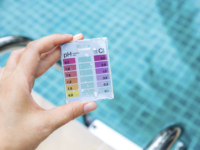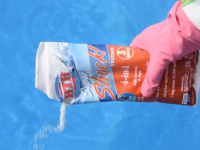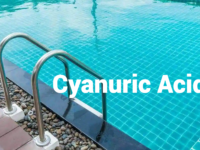Algaecide is one of the most popular remedies for getting rid of algae and other bacteria in the pool. However, there are several tips to follow (including salt chlorine generators for a quick and easy soak) in order not to harm your health or your pool.
Also, you will learn what an algaecide is and how it works, what signs in the pool will tell you that you need an algaecide, and most importantly, how to use it SAFELY. Moreover, you will not need to be nervous if you suddenly realize that you have put in too much product — we will tell you what to do.
So, what is a must-know for every pool owner who is ready to fight algae safely? Check out the article!
What is an algaecide and how does it work?
Algaecide is a swimming pool chemical to kill or prevent algae from growing in your pool. Its job is to interrupt important processes inside the algae, stopping photosynthesis or provoking an explosion of the algal cell walls. It is best to use an algaecide in combination with a chlorine sanitizer to keep the pool water clean.
Most algaecides are copper-based, which are chemical compounds with metal as the central atom. Such a chemical disrupts the normal cellular processes inside the algae, thus killing them and preventing them from developing.
What are the signs to understand that you need an algaecide?
The different colors of algae in your pool are signs that may be a reason to use an algaecide.
💚 Green algae
The most common type of algae causes you to notice green water in your pool. They are caused by a lack of proper filtration and sanitation — this often leads to an elevated pH level in the pool.
It is quite possible to prevent this type of algae: nothing disinfects better than chlorine. Chlorine is the most common and cost-effective way of sanitizing your pool. Pool filters are responsible for proper filtration. It is a key element of the pool, which is responsible for keeping it clean and safe. It can be paper cartridge filters, sand filters, and DE (diatomaceous earth) ones.
🖤 Black algae
Such algae can appear in your pool if someone, before entering the pool, swam in a natural body of water (ocean, river, lake, etc.) and did not wash their swimsuit after that.
💛 Yellow algae
They are more common in southern countries than in northern ones, however, yellow algae (also called mustard) can appear in all pools. If the pH or alkalinity of your pool is abnormal, this may be the cause. Debris, phosphates, and pollen can also cause yellow algae. They are often mistaken for sand or dirt and can stick to walls and pool toys. A pleasant habitat for them — areas with environmental and atmospheric changes.
How to use algaecide effectively for your pool step by step
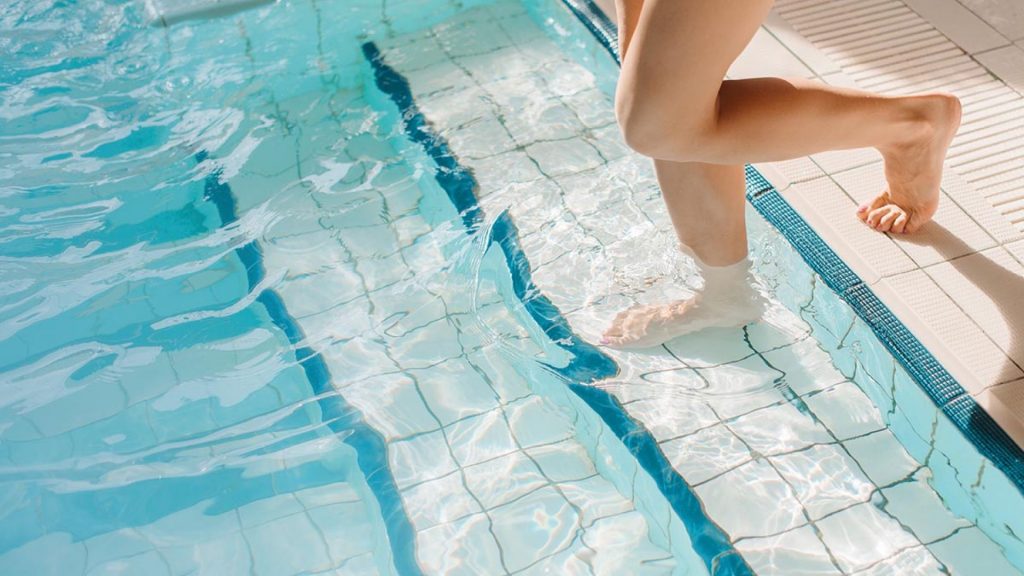
- Make sure all the mechanics of your pool, including the pump, are working properly.
- Before adding algaecide, the chlorine level in the pool should be normal (between 1 and 3 ppm, parts per million). Chlorinate the water and let it stand for 24 to 48 hours until it returns to a safe level.
- Add the correct amount of algaecide to the pool following the instructions on the package. Alternatively, use the online algaecide calculator.
- Leave your pool with algaecide overnight and vacuum all dead algae in the morning.
- Adjust your pool pH and keep a close eye on chlorination levels. Remember: safe chlorine levels range between 1 and 3 parts per million. If the concentration is above 6 ppm, the pool is unsafe.
- Add algae concentrate or copper chelate solution to the water, depending on the needs of your pool.
Before using any chemicals for the pool, you need to understand what it needs. To do this, you need to test the water with test strips. It’s like tasting a dish before serving it to guests. The three most important parts of pool water chemistry are pH levels, alkalinity, and sanitizer levels:
- pH levels indicate how acidic or basic the pool water is. Low levels are acidic, while high levels are basic. The ideal level range for the pool is from 7.4 to 7.6.
- The ideal alkalinity range is 100 to 150 parts per million (ppm). And you can use baking soda to increase the alkalinity in your pool.
- The sanitizer levels are controlled by the amount of chlorine and bromine in the water. The correct level depends on the type of sanitizer you choose. The ideal bromine level in your pool water is 5 ppm, and never let the level drop below 3 ppm. The chlorine level should stay between 1 and 3 ppm to maintain a healthy pool.
- Enjoy a clean pool free from algae and other bacteria!
Regular use of algaecide: what you need to know to stay healthy
Use shock or algaecide: what should be added first and can they be used together?
Algaecide can kill algae, but it is best used as a preventative measure. Its main advantage is that it does not change the pH of the water, but at the same time it prevents algae from growing and developing in your pool. What’s more, the algaecide works in tandem with a chlorine sanitizer to keep pH levels balanced.
Algaecide should be added after every shock session, as it maintains chlorine while it does its magic outside of Hogwarts. A word about shock: the essence of its use is to add chlorine or non-chlorine shock to the pool to raise the level of “free chlorine” (between 2 and 4 ppm). Free chlorine sanitizes the contaminants, while combined chlorine refers to chlorine that has already been combined directly with the contaminants. You need to raise the “free chlorine” level to such an extent that algae and other bacteria are destroyed.
Therefore, be sure to shock the pool first, and then, when the chlorine level in it returns to normal (1-3 ppm), add the correct dose of algaecide based on the pool capacity into the basin while the pump is running. It will help the remedy circulate and act more efficiently.
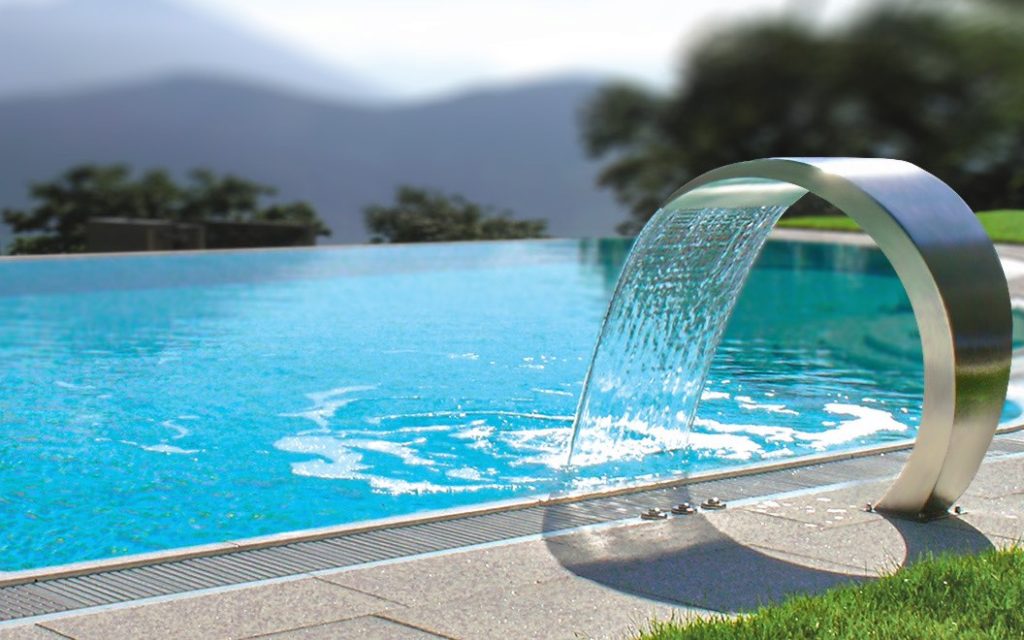
Be sure to add algaecide to the pool after it was closed for the non-swimming season. A dark and humid environment is a great opportunity for algae to grow, but you don’t need new “friends” when you reopen the pool in the hot season?
How long does it take for algaecide to work?
Algaecide acts in the pool for five to seven days. Watch your pool for several days, and run the pump regularly to see if the mold comes back. After five-seven days, you can re-add the amount of algaecide you need for your pool to complete the algae removal process.
Can you put too much algaecide in your pool?
Yes, if you miscalculate the amount of algaecide, you can overdo it. This can cause foaming and, in some cases, even irritation to the eyes and skin. You need to know the gallon capacity of your pool to determine the correct dosage. Also, one of the side effects is that the algaecide stops working as it should, it becomes ineffective.
What should you do if you add too much algaecide to your pool? The only option is to wait until it naturally dissolves over time. Evaporation and backwashing will help with it. If you cannot wait for the product to disappear, you can always drain some of the water and add fresh water to dilute the algaecide.
How long does it take for algaecide to dissipate?
If you add too much algaecide, foam appears, but note that it will dissipate over time. The algaecide will slowly fade due to chlorine, so you can shock the pool with higher chlorine levels to speed up the process. Don’t worry: even if you do not do this, the algaecide will disappear in about a week, or two at the most.
Can you swim with algaecide?

Swimming while using algaecide directly depends on which product was used. There are two main types of algaecides — long-lived and regular.
🌊 Long-lived algaecides
They are added once at the beginning of the swimming season, they usually contain copper and are often safe to swim immediately after treatment. However, if you add a large dose of this algaecide and go swimming right away, your hair may turn green or blue, or it may irritate your eyes and skin.
💧 Regular algaecides
These algaecides, unlike the long-lived ones, are added to the water every couple of weeks. They do not contain copper, but quaternary ammonium compounds. These formulations are 100% safe for immediate swimming.
⏳ Time limit
Although the algaecides that are used for most pools are low in concentration so that you can swim right away, it is advisable to wait a few minutes to an hour. Let the product spread throughout the pool, especially if it has copper in its composition since you don’t want to have colored hair, right?
Summary
If you use algaecide step by step correctly, as well as calculate the correct dose for your pool and not overdo it, you can consider it a safe product for your health. You can even swim with it, but remember that it is always better to wait for a little while before immediately swimming. Otherwise, feel free to use algaecide as your main weapon against algae and enjoy a crystal clear pool all year round!
FAQs
🥇 Do I use shock or algaecide first?
While shocking and adding algaecide is effective in getting rid of algae, it should not be done together. When you mix chlorine and algaecide, it renders both of them useless. You should first shock the pool and wait for the chlorine level to become normal (1-3 ppm), and then add an algaecide.
🛎 When should I use an algaecide in my pool?
Algaecide should be added to your pool water every week. Preventing algae is the main purpose of using an algaecide: it kills algae, but it is better to use it as a preventive measure against starting algae and growing in the pool. Algaecide should be added after every shock treatment.
🌡 Can you put too much algaecide in your pool?
Yes, if you miscalculate the amount of algaecide, you can overdo it. This can cause foaming and, in some cases, even irritation to the eyes and skin. The only option is to wait until it naturally dissolves over time. You can always drain some of the water and add fresh water to dilute the algaecide.
🏊♀️ Can you swim with algaecide?
Swimming while using algaecide directly depends on which product was used — long-lived or regular algaecide. Long-lived usually contain copper and are often safe to swim immediately after treatment. However, if you add a large dose and go swimming right away, your hair may turn green or blue. Regular ones do not contain copper, but quaternary ammonium compounds. These formulations are 100% safe for immediate swimming.
⌚ How long does it take for algaecide to work?
Algaecide works in the pool for 5-7 days. Watch your pool for several days, and run the pump regularly to see if the mold comes back. After 5-7 days, you can re-add the algaecide to complete the algae removal process.

